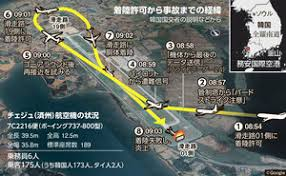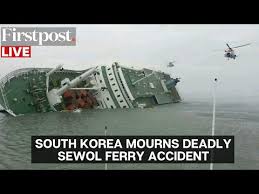Korean airports: Dangerous facilities still installed at 8 airports
– Concrete localizers cause major accidents
– 8 airports to rebuild localizers by the end of the year
Summary from Hankyoreh newspaper article.

Jeju Air disaster:
On the afternoon of December 31, a Jeju Air flight at Muan International Airport caused a major disaster.
An investigation team from the US National Transportation Safety Board (NTSB) investigated the disaster site.
Korea’s Ministry of Land, Infrastructure and Transport: Localizer investigation
A total investigation of azimuth facilities (localizers) was conducted at 13 airports nationwide.
Improvements are needed for 9 facilities at 7 airports, including Muan Airport.

Concrete structures at Muan Airport:
Concrete structures at Muan Airport that are said to have exacerbated the damage from the Jeju Air disaster.
There are 8 other airports with highly dangerous localizer facilities.
The Ministry of Land, Infrastructure and Transport said it would improve these facilities by the end of the year.
Investigation by the Ministry of Land, Infrastructure and Transport:
From January 2nd to 8th, the location and materials of navigation safety facilities, including localizers, were investigated at 13 airports nationwide.
Results of localizer investigation: Announced on January 13th
1. Airports other than Muan Airport
2. Gwangju Airport
3. Yeosu Airport
4. Pohang-Gyeongju Airport
Each airport had one localizer with a concrete foundation.
5. Gimhae Airport (2): Concrete foundation protruding above ground
6. Sacheon Airport (2): Concrete foundation protruding above ground
7. Jeju Airport: H-shaped, rigid steel structure
Dangerous structure:
It is a dangerous structure that does not easily break when an aircraft hits it.

Measures taken by the Ministry of Land, Infrastructure and Transport:
The Ministry of Land, Infrastructure and Transport will create a facility improvement plan for all airports nationwide, including localizers, by January 24th.
The ministry has decided to announce improvement plans for all areas of aviation safety by April.
Special inspection of the Boeing 737-800:
The Ministry of Land, Infrastructure and Transport will conduct a special inspection of the Boeing 737-800, the model involved in the Jeju Air Disaster.
Some cases of violation of regulations were uncovered from December 30th to the 10th of this month.
1. Inspection of 101 aircraft of the same model owned by six Korean airlines
2. Full inspection of maintenance history and compliance with procedures, etc.
The Ministry of Land, Infrastructure and Transport will take administrative disciplinary action against the relevant airlines.

Measures to deal with both engines stopping: Ministry of Land, Infrastructure and Transport
3. The training manual has been updated to include a case where both engines stop.
4. The ministry will consider adding bird strike response procedures to pre-flight meetings.
https://news.yahoo.co.jp/articles/6ca5773e44a41ce4b5d8b1f66643e9b871f19de6
Excerpts from 14 online comments:
h20********:
The basic method of constructing airports in Korea is to use concrete and blocks.
1. All airports are surrounded by block walls.
2. It is extremely dangerous if the surrounding block walls are not removed.
a*****:
Why are there so many concrete walls in Korea, which should not be common sense in the world?
I would like to know the purpose of the concrete walls.

The capsizing of the Seowul in Korea:
A passenger ship sank in Korea on April 16, 2014.
304 of the 476 passengers and crew were killed.
This is the worst maritime disaster to have occurred in Korea.
Itaewon incident in Seoul:
Itaewon, a busy shopping district in Seoul, the capital of South Korea, on the night of October 29, 2022.
An accident caused by a crowd avalanche that occurred during the crowded Halloween season.
It was clearly a man-made disaster. It should never have happened. It’s a shame.
https://news.yahoo.co.jp/articles/6ca5773e44a41ce4b5d8b1f66643e9b871f19de6/comments